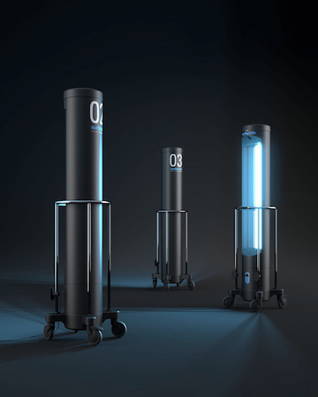 Cleanzine: your weekly cleaning and hygiene industry newsletter 17th July 2025 Issue no. 1171
Cleanzine: your weekly cleaning and hygiene industry newsletter 17th July 2025 Issue no. 1171
Your industry news - first
The original and best - for over 20 years!
We strongly recommend viewing Cleanzine full size in your web browser. Click our masthead above to visit our website version.
Children's Hospital introduces cutting edge Surfacide technology to combat HAIs
 There is a large variation in hospital infection rates across the UK, with the worst performers having more than five times the number of cases of Healthcare Acquired Infections than the best performing hospitals.
There is a large variation in hospital infection rates across the UK, with the worst performers having more than five times the number of cases of Healthcare Acquired Infections than the best performing hospitals.
Infection rates can be cut with better hygiene and improved patient care in hospitals, surgeries and care homes, such as ensuring staff, patients and visitors regularly wash their hands.
While this may seem simple, and even allowing for Health Minister Jeremy Hunt's words last November:
"The NHS can rightly be proud that in the last six years we've reduced the number of MRSA cases by 57% and C. difficile by 45%... these aren't abstract numbers - they show that we have prevented the needless suffering - sometimes fatal suffering - of over 60,000 people in that period... because every avoidable infection also has a financial cost, we know that progress has also saved the NHS over half a billion pounds," healthcare acquired infection is still a daily battle fought on a very local level with potentially life-threatening outcomes.
As part of its ongoing effort to combat HCAIs, Royal Manchester Children's Hospital (RMCH) recently added the Surfacide Helios Ultraviolet C (UV-C) disinfection system to its cleaning protocol. The Helios system is a triple-emitter UV-C hard surface disinfection system that eradicates multi-drug resistant organisms in the patient environment.
RMCH is the first hospital in the UK to join other leading healthcare systems worldwide that are turning to Surfacide Helios UV-C technology as a complement to traditional cleaning methods. The hospital will be deploying four UV-C disinfection systems (12 emitters) throughout the hospital to protect patients and staff.
This is thought to be the only UV-C system to use three light emitting towers to safely and effectively disinfect all areas of a hospital room including tough-to-reach areas such as are found in bathrooms.
"Our number one goal is to keep our patients safe, not only through the advanced care we provide, but also through the environment in which we provide that care," says Julie Jolly, matron - service improvement, enhanced recovery and care co-ordination, and V2A programme lead (children's), for Royal Manchester Children's Hospital. "We are extremely pleased with the efficacy and impact of Surfacide's Helios system in protecting our patients from the bacteria and viruses that can cause HAIs."
RMCH conducted an independent pilot study using the UV-C disinfection system in the hospital's Oncology/Haematology Unit. The eight-month independent study compared standard cleaning protocols alone to those including Surfacide Helios UV-C disinfection. The result was an 83.7% decrease in contaminated sites and a 43% decrease in HAIs when the Helios system was introduced into the patient environment along with standard cleaning procedures.
The Helios system was effective at reducing and eliminating a variety of drug-resistant microorganisms and has been shown to eradicate multi-drug resistant organisms, including C.Diff, MRSA, VRE, CRE and Acinetobacter.
Gunner Lyslo, founder and CEO of Surfacide, explains: "HAIs create significant health risks and cost the healthcare industry billions of dollars each year. That toll has placed a high priority on innovative technologies such as UV-C disinfection.
"We are proud to work with the team at the Royal Manchester Hospital and help them lead the way when it comes to patient safety and we look forward to our continued partnership."
UV-C light has long been used to disinfect drinking water and has well documented efficacy at targeting the DNA of microorganisms, leaving them unable to infect and replicate. The Helios system is different because it introduces three UV-C energy emitting towers in the patient environment versus other systems that only use one. The triple emitter approach decreases the distance to contaminated surfaces thereby reducing disinfection time and improving overall efficacy.
In addition, the system is highly effective at covering all areas of the room, including the bathroom and other hard-to-reach areas. Finally, it reduces the amount of time to clean a room since the emitters do not need to be moved during the cleaning process.
The 10-to-20 minute Helios disinfection cycle is performed in an unoccupied room after an environmental services cleaning professional has manually cleaned the area and wiped down surfaces. The system uses an automatic laser mapping feature to measure the room and detect potential areas of contamination. These measurements are then incorporated into an algorithm to determine an optimal time to complete the disinfection process.
T: 0800 612 8187F (UK) / 844-390-3538 (US)
W: www.surfacide.uk / www.surfacide.com
10th August 2017







